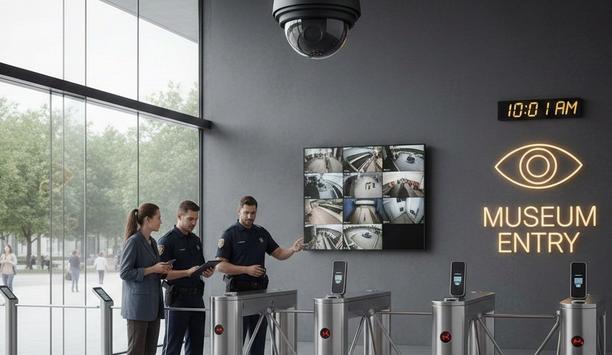Check Out Our Special Report On Casino Security
What are the New Trends and Opportunities in Video Storage?
- Digital video storage now leverages hard drives and cloud for enhanced capacity.
- AI and video analytics emerge as key applications for video data storage.
- Opportunities in video storage highlight forensic, investigative uses for security systems.
Editor Introduction
Video storage has been a challenge since the days of VCRs and videotape. Storing images is a central need for any video systems, especially one that is focused on the forensic and investigative aspects of video. Today, digital video is stored on hard drives and even in the cloud. Increasingly, video is considered “data” that drives a variety of video analytics and even artificial intelligence (AI) applications. We asked this week’s Expert Panel Roundtable: What are the new trends and opportunities in video storage?
With more cameras capturing more hours of video evidence, at increasingly higher resolutions, for longer periods of time, the need for flexible, accessible, affordable storage has never been more important. Customers are looking for ways to easily store, retain, manage and access their video data for forensic and analytics purposes, and many are turning to hybrid cloud/on-premises solutions. The ability to seamlessly migrate video data between on-premises storage solutions and the cloud creates a more efficient operating model to increase the availability and retention time of video data, while simultaneously keeping costs down. Ever-increasing cybersecurity threats mean that customers are looking to invest in trustworthy appliances and storage solutions that were designed with robust cybersecurity features. And this is a big opportunity for manufacturers to develop cybersecure and resilient storage solutions that help protect their customers’ data and keep it confidential yet available while shielding networks from cyberattacks.
For most organizations, including schools and hospitals, the biggest opportunity in video storage is by far its remote capabilities. Many organizations are tasked with monitoring their buildings while simultaneously keeping them minimally or completely unoccupied. By leveraging video surveillance solutions hosted on the cloud, video data can be remotely stored, monitored and analyzed from any device with an internet connection and appropriate permissions. This allows them to monitor their physical locations while allowing security managers to remain socially distanced at home to help keep employees and occupants safe. Once ready to reopen more fully, cloud-hosted video can be just as powerful on-site through integrations with intelligent solutions that automate every data touchpoint for a safer, healthier building – like facial recognition, contact tracing and mask detection technologies. Whether remote or on-site, video will continue to be a critical part of organizations’ security strategies during the pandemic and beyond.
In terms of video storage, there is currently a trade-off between cloud and on-premise storage. There are benefits and weaknesses with each. However, there has been an increased need for remote monitoring, in place of having staff onsite, due to occupancy restrictions. This trend is favorable to cloud storage and video cloud storage capabilities. Cloud also offers expanded data storage – allowing for more retrospective data, machine learning and analysis. This expanded storage offers end users the opportunity to intelligently filter the information stored, so you can remove what you don’t need and only store useful video analytics. This isn’t to say that on-premise storage will decrease in value to end users, as it has its own set of strengths. Whether it be a fully on-premise solution, fully cloud or a hybrid, it all comes down to the quantity of data you will be storing and the resources you can invest.
We live in an interesting time for data storage. I recently read that Wikipedia was encoded onto synthetic DNA in 2016! In the security industry, the quest has been for bigger, faster, and cheaper storage. As pixel-counts climb, AI and data analytics are integrated, more and faster storage is needed to write and retrieve video and other data simultaneously. Hard drives are here to stay but seem to be reaching certain physical limitations. Non-volatile memory will continue to grow in capacity, speed, and reliability, further entrenching itself into on-premises storage solutions. The future is hybridizing through controller technologies and data management optimization by employing best-of-breed solutions comprised from available platforms. In the future, in-memory and persistent memory databases, data fabric, and graph databases may find their way into security storage needs. However, a combination of flash arrays and hard drives will be our foreseeable future.
Though by no means a novel technology to the security industry, video storage in the cloud will continue to see growth in non-security markets. This is mainly driven by growing possibilities in the IoT space. Cloud storage also provides myriad opportunities for small and mid-sized businesses, as well as enterprise organizations, by offering cost-effective solutions and increased flexibility. These benefits have only been heightened by the COVID-19 pandemic, as many organizations are reevaluating traditional usage of existing technologies, while also seeking others to assist with day-to-day operations. For a small business owner searching for the flexibility of remote monitoring of their vacant spaces, or in situations where less staff onsite is needed, cloud storage offers crucial capabilities.
Consistent with so many new technology trends, the latest opportunity in video storage is cloud. Most new video management systems (VMS) come with some kind of cloud storage option. The key factors to be considered are cost and bandwidth. Putting everything into the cloud is typically not cost effective, so it’s important that organizations consider how to get the most bang for their buck. Only putting video clips of interest that need to be shared with a loss prevention team is a great example. Using analytics to intelligently record only with specific motion triggers is another. With today’s VMS technology, teams can easily manage hybrid video storage systems, maximizing the efficiency between on-premises and cloud storage. Your video system’s ability to store data in the cloud (and the overall functionality of the VMS itself) is only as effective as the network upon which it relies.
Editor Summary
In the era of social distancing, remote access to video is an even more important capability of storage systems. Quick access to needed video and general ease of use are additional factors driving the video storage market. Storage systems also must integrate seamlessly with other video and security systems. A newer trend is emergence of cloud systems in addition to traditional on-premise storage devices. End users are choosing between the two or deploying the most effective combination of both (hybrid).
- Related companies
- Genetec, Inc.
- Johnson Controls, Inc.
- ONVIF
- Razberi Technologies
- Interface Systems LLC
- Related links
- Genetec IP cameras
- Related categories
- Surveillance cameras
- IP cameras
- Video servers (IP transmission)
- Dome cameras
- IP Dome cameras
- Storage
- View all news from
- Genetec, Inc.
- Johnson Controls, Inc.
- ONVIF
- Razberi Technologies
- Interface Systems LLC
Expert commentary
Security beat
The Key To Unlocking K12 School Safety Grants
DownloadHoneywell GARD USB Threat Report 2024
DownloadPhysical Access Control
DownloadThe 2024 State Of Physical Access Trend Report
DownloadThe Security Challenges Of Data Centers
DownloadKentixONE – IoT Access And Monitoring For Data Centers
Climax Technology HSGW-Gen3 Modular Smart Security Gateway
Delta Scientific DSC50 ‘S’ Barrier: Portable, Crash-Rated Vehicle Mitigation Solution


























